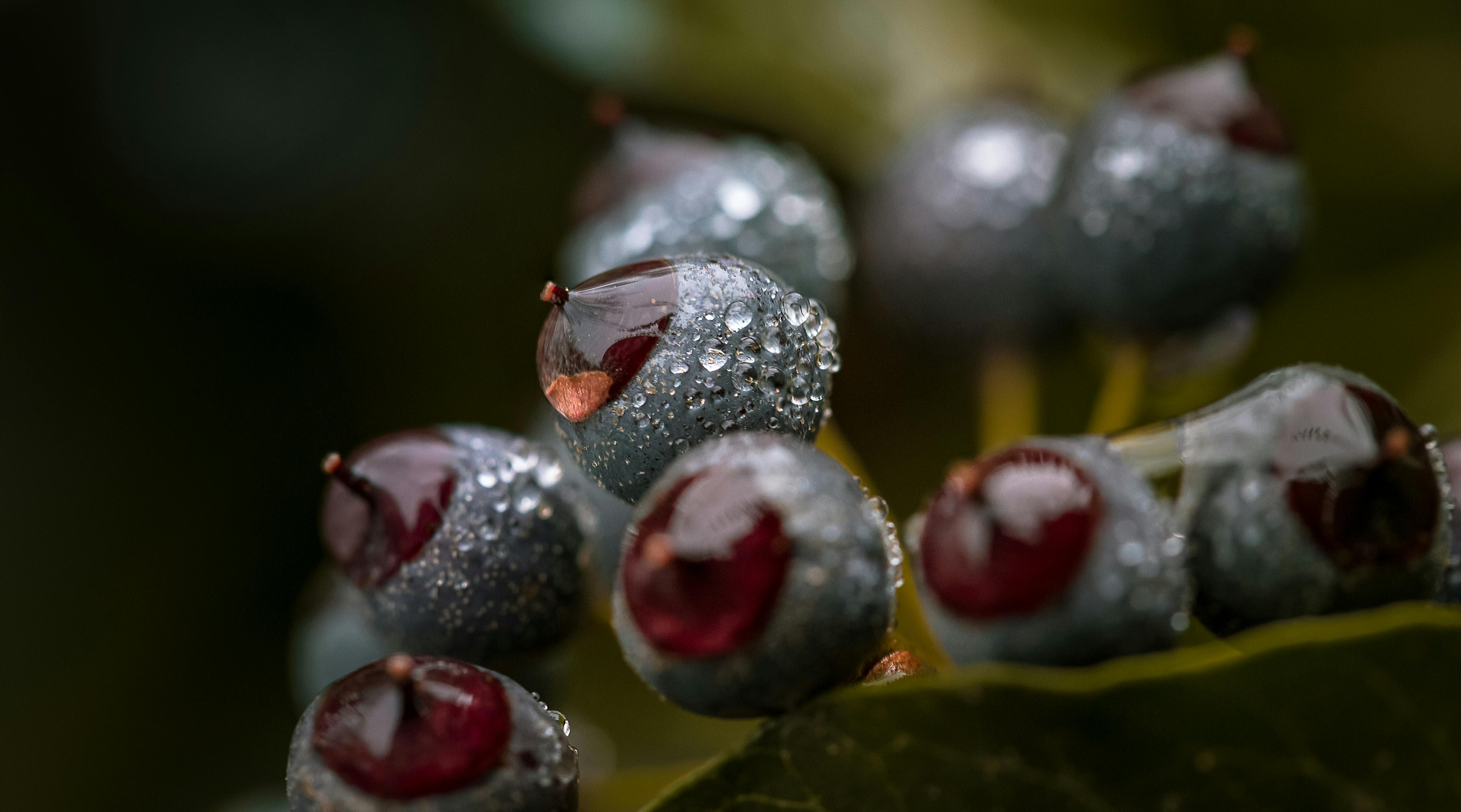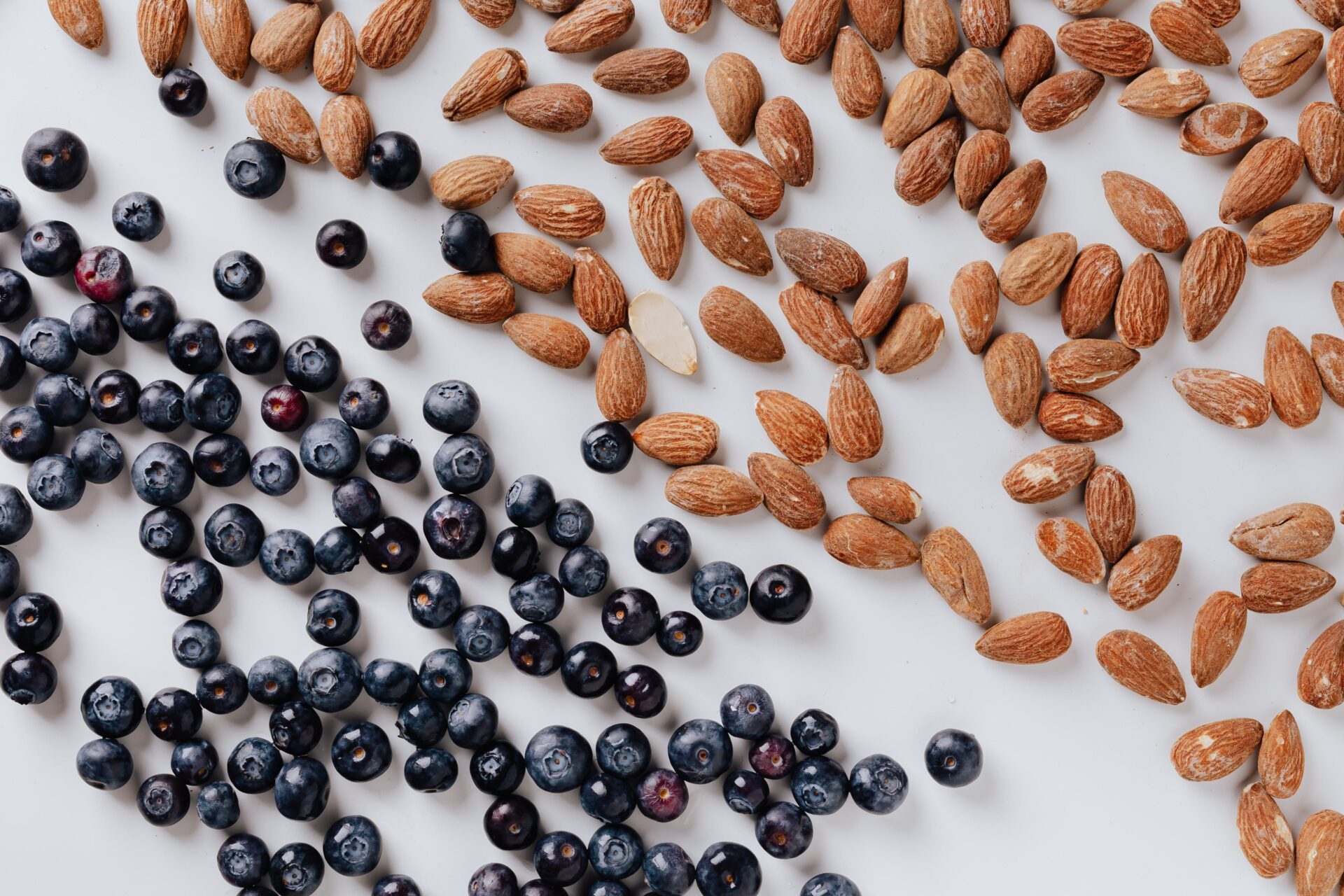Have you ever noticed that blueberries can be quite small? It’s a common question among gardeners and shoppers alike. Many people wonder why the blueberries they find in their local store or in their backyard are so petite. This article will explore some of the reasons why blueberries may be small, and suggest ways to increase the size of your harvest.Blueberries are small in size due to the fact that they are native to areas with cooler climates that do not allow for large growth. The plant itself is very delicate and can only survive in regions with mild temperatures and plenty of rain. Additionally, blueberries have a shallow root system which makes them more susceptible to drought conditions. The small size of the berries also helps them to remain protected from birds and other animals that may want to eat them.
Common Causes of Small Blueberries
Blueberries are a delicious fruit that can be used in a variety of recipes, but they can sometimes be small and not of the highest quality. There are a few potential causes for small blueberries, some of which can be easily remedied.
One common cause is lack of water. Blueberry plants require a lot of water, especially during the flowering and fruiting stages, so if the soil is too dry it will lead to smaller berries. To avoid this, make sure to give your blueberry plants plenty of water during these stages and ensure that the soil is kept moist throughout the growing season.
Another potential cause is nutrient deficiency. Blueberry plants require certain nutrients such as nitrogen, phosphorus, and potassium in order to thrive and produce larger berries. If these nutrients are lacking in the soil, then the blueberries will be smaller than normal. To remedy this situation, add a fertilizer rich in these nutrients to the soil around your blueberry plants or use mulch to provide them with additional nutrients.
Finally, temperature can also have an effect on berry size. If temperatures are too cold or too hot for extended periods of time then this can lead to smaller berries. To mitigate this issue try planting your blueberry bushes in an area that has more moderate temperatures and provide protection from extreme weather conditions as needed.
By taking these steps you should be able to reduce or eliminate small blueberries from your garden and have large juicy berries instead!
Climate Factors That Affect Blueberry Size
Climate plays a major role in determining the size of blueberries. Temperature, humidity, and rainfall all affect the size of blueberries. Warmer temperatures can cause the berries to grow larger, while cooler temperatures can lead to smaller berries. High humidity can also cause the berries to swell in size, while low humidity can lead to smaller berries. Too much rain can also affect the size of blueberries, as it can cause them to split open and decrease in size. On the other hand, too little rain can cause the soil to become dry and hard, resulting in smaller sized fruits. In order to maximize blueberry size, it is important for growers to maintain a balanced environment with optimal temperature, humidity, and rainfall levels for their region.
Light also plays an important role in determining blueberry size and quality. Too much light exposure can lead to larger sized fruits with less flavor or sweetness; whereas insufficient light exposure will result in smaller sized fruits with more intense flavor and sweetness. Therefore, adequate sunlight is necessary for optimal fruit production and quality. Additionally, soil type is an important factor in determining blueberry size since different types of soil will respond differently to temperature and moisture levels.
In conclusion, climate factors such as temperature, humidity, rainfall and light have a major impact on the size of blueberries grown by farmers or gardeners. Growers should ensure they maintain an ideal environment with adequate sunlight and optimal temperature, humidity, rainfall levels for their region in order to maximize fruit production and quality.
Nutrient Deficiencies That Cause Small Blueberries
Blueberries are a favorite summertime snack, but if the berries on your bush are small it could be due to a nutrient deficiency. Small blueberries can be caused by a lack of nitrogen, potassium, phosphorus, magnesium, calcium, and boron. Nitrogen is important for leaf growth and keeping the leaves green. Potassium helps with root growth and helps regulate water uptake in the fruit. Phosphorus helps with flower and fruit production as well as root development. Magnesium is essential for photosynthesis and calcium helps with cell development. Finally, boron aids in seed formation and cell wall structure.
A soil test can help determine which nutrients are lacking from your soil so you can adjust your fertilizing routine accordingly. If you find that your soil is deficient in any of these nutrients, adding them to your routine should help to normalize the size of your blueberries. For example, if your soil is low in phosphorus you can use a fertilizer that contains this nutrient such as bone meal or fish meal to give the plants what they need to produce larger berries.
It’s also important to make sure that your plants are getting enough light and water throughout the growing season. If there’s not enough light or water then the plants won’t be able to produce large fruits because they won’t have access to all of the necessary resources to do so. Additionally, be sure to remove any diseased or damaged branches as these can cause stress on the plant which could lead to smaller berries as well.
By making sure that your blueberry bush has access to all of its necessary nutrients and resources you should be able to enjoy larger fruits come harvest time!
Soil pH Requirements for Maximum Blueberry Size
Blueberry plants require soil with a slightly acidic pH of 4.5 to 5.5 in order to grow and produce large fruit. A soil pH outside of this range can result in stunted growth, poor yields, and even death of the plant. To ensure that your blueberry plants thrive, it is essential that you test the soil’s acidity and adjust it to the proper level before planting.
A simple soil test will tell you the current pH of your soil as well as how much lime or sulfur is needed to adjust it to the proper range. If you find that your soil is too acidic, adding lime will increase the pH and make it more alkaline. On the other hand, if your soil is too alkaline, adding sulfur will lower the pH and make it more acidic.
Once you have adjusted the pH of your soil to an appropriate level for growing blueberries, there are a few other factors that you need to consider in order to get maximum fruit size from your plants. Soil fertility is important; blueberries need adequate levels of nitrogen, phosphorus, and potassium in order to produce healthy fruit. Additionally, good drainage is essential; standing water can cause root rot and other problems that can inhibit growth or kill plants altogether.
The right soil conditions are essential for growing large blueberries with great flavor. By testing your soil’s acidity and adjusting it with lime or sulfur as necessary, ensuring adequate fertility levels, and making sure there is good drainage in your garden plot, you will be well on your way to producing big delicious berries that everyone can enjoy!

Effects of Pruning on Blueberry Size
Pruning is an effective way to help blueberry bushes produce larger berries. It is a process of removing certain parts of the plant, such as branches, stems, or roots that are not needed or desired. This helps promote healthy growth in the plant by allowing more sunlight and air to reach the inner parts of the bush. Pruning also encourages larger berry production by stimulating new flowering and fruiting growth. The size of the berries can be increased by pruning at the right time during their development cycle and using appropriate pruning techniques.
The best time for pruning blueberries is in early spring when they are just beginning to bud out. At this time, it is important to remove any dead, diseased, or damaged branches as well as any overcrowded stems that are shading out others. This will help create a better environment for healthy growth and larger fruit production. Additionally, it is important to thin out densely packed areas which can help increase air circulation and reduce disease risk.
The amount of pruning should be based on how much fruit production you desire from your bush. Light pruning can help encourage more flowering and fruiting while heavy pruning can lead to fewer flowers but larger berries. It is also important to remember that too much pruning can lead to fewer flowers and smaller fruits overall so it should be done with careful consideration of the desired outcome.
Overall, proper pruning is an effective way to increase blueberry size and improve their overall quality. It can be done easily with a pair of sharp shears if done correctly at the right time during their development cycle. With proper care and attention, you can expect your blueberries to be bigger than ever before!
Interactions Between Varieties of Blueberries and Size
The size of blueberries can vary based on the variety. Depending on the type of blueberry, size can range from small to large. Generally, the larger the berry, the sweeter and juicier it will be. Different varieties of blueberries may also interact differently with size. For example, some varieties may produce larger berries when grown in cooler climates, while others may produce smaller berries when grown in hotter climates.
Different varieties of blueberries also have different nutritional values. While all blueberries are high in antioxidants, some varieties may contain higher levels of vitamins and minerals than others. This could influence how much nutrition is derived from eating different sizes of blueberries from different varieties.
Blueberry farmers have been researching various interactions between varieties of blueberries and size for many years in order to optimize crop yields and maximize nutrition per berry. By studying these interactions, farmers can determine which combinations of variety and size will give them the best results when harvesting their crop.
In addition to harvesting crops for consumption, farmers can use these insights to develop new varieties that are better suited for specific climates or that offer more nutritional value per berry than current varieties. Farmers can also use this research to determine which sizes are best for specific market applications such as jams or frozen products.
In conclusion, there are many interactions between varieties of blueberries and size that affect both crop yields and nutritional value per berry. By understanding these interactions, farmers can optimize their yields while also ensuring high levels of nutrition per berry.
Impact of Watering Regimen on Blueberry Size
Water is essential for the growth and development of blueberries. It is important to understand the impact that a watering regimen has on the size of blueberries as this will determine how much water is needed for optimal yield. Different varieties of blueberries need different amounts of water, so it is important to consider this when developing a watering regimen. Additionally, the type of soil and the region where the blueberries are grown can also have an effect on how much water is needed.
The amount of water required for optimal growth and development of blueberries will depend on the variety, soil type, and region in which they are grown. Generally, blueberries need at least 1 inch of water per week during the growing season. During especially hot or dry periods, more frequent watering may be necessary to ensure that the plants have enough moisture. Additionally, it is important to note that too much water can be detrimental to blueberry production as it can lead to root rot or other issues with plant health.
When considering watering regimens for different varieties of blueberries, it is important to understand how much water each variety needs in order to achieve optimal size. If too little water is given, then it may lead to smaller berries due to inadequate moisture levels in the soil; however, if too much water is given, then it could lead to larger berries due to excessive moisture levels in the soil. Therefore, finding a balance between providing enough and not too much water will help ensure optimal berry size.
In conclusion, understanding how different watering regimens can impact berry size is essential for achieving optimal yields from blueberry production. It is important to consider factors such as variety, soil type, and region when developing a watering regimen as these factors can affect how much water should be provided for optimum berry size. By finding a balance between providing enough and not too much water will help ensure that producers get maximum yields from their crops.

Conclusion
Blueberries are a great source of antioxidants, vitamins and minerals. While small blueberries are not as attractive as large ones, they can still provide the same nutrition as larger berries. Because of their small size, they can be eaten in large quantities, allowing for more nutrition in less time. Additionally, the smaller size means that they can be easily frozen or dried for long-term storage.
Overall, small blueberries are just as beneficial as large ones. They may not look as appealing, but their nutritional content makes them a great choice for adding to your diet. Whether purchased fresh or dried or frozen, small blueberries are a nutritious addition to any meal!



